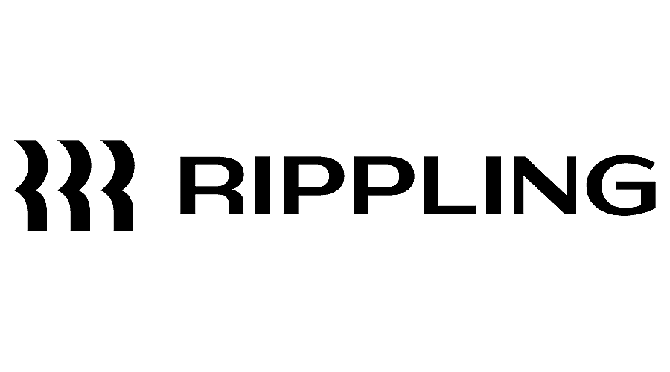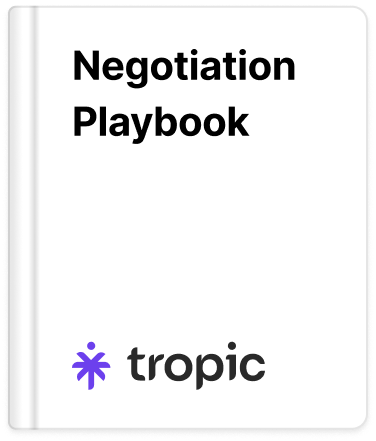
Rippling Pricing Negotiation Guide for Procurement and Finance Teams

Pricing Overview
Rippling offers a comprehensive suite of tools for managing HR, IT, and finance in one platform. Their pricing model is based on a per-employee, per-month fee, which can vary depending on the modules and services you choose.
Their main offering/typically the largest spend SKU is Rippling Unity which they offer in multiple tiers: Core, Pro, Unlimited, and Enterprise. Rippling also offers packages and modules for HR, Payroll, IT management, Financial Planning, and Global payroll.
Discounts
- Rippling offers discounts for customers who opt for annual billing instead of monthly billing.
- Organizations with a large number of employees may be eligible for volume discounts.
- Longer term agreements tend to also offer additional discounts or free months.
General Strategy
1. Understanding Rippling's Pricing Structure
- Assess Usage Needs: Regularly evaluate your company's usage of Rippling, especially since their pricing model is based on employee headcount or active user count, depending on the SKU. Ensure you are only paying for the services you need.
- Opt for Multi-Year Contracts: Committing to a multi-year agreement with Rippling can lead to discounting depending on the length of the term. We've seen discounting of 5-10%, depending on the term length.
- Avoid Third-Party Negotiations: Direct negotiations with Rippling are more beneficial as using a third party can significantly reduce potential discounts to only 10% of the list price.
2. Leveraging Discounts and Offers
- Target High Discount Rates: Aim for a minimum 20% discount rate during negotiations, keeping in mind that some customers have successfully secured up to a 50% discount.
- Request Free Months: Negotiate to include free months in your contract, typically one free month per year, which can significantly lower the overall cost. This is most successful with new purchases but can be relevant if adding in new products at the time of renewal.
- Increase Discounts with Multi-Year Commitments: Each additional year in a multi-year contract can potentially add another 5% discount.
3. Competitive Tactics
- Express Competitive Options: Make it clear to Rippling that you are considering their competitors. This can make them more willing to offer better terms to secure the deal. With renewals, ensure to start competitive evaluation conversations well before 90 days to renewal so that it is a viable threat.
- Capitalize on Rippling's Desire to Close Deals: Use their eagerness to close the deal to your advantage, especially if they believe they might lose the contract to a competitor. This can lead to increased discount percentages.
4. Historical Issues: - Leverage executive involvement and historical issues to strengthen your negotiating position. - Indicate willingness to consider competitors or to walk away to prompt higher discounts. - Direct customer negotiation (not via third parties) yields better results; third-party involvement can reduce discounts.
- Escalate negotiations internally to involve senior leadership for added pressure.
- Highlight any past service issues or dissatisfaction to justify requests for better terms.
- Make it clear you are evaluating alternatives to encourage Rippling to improve their offer.
Custom Strategies
Strategy #1: New Purchases
Step 1: Understand Leverage.
- A new purchase of any HR tool is prime leverage for the Customer as the supplier is aware that most likely multiple suppliers are being engaged and the team is willing to spend resources on ripping and replacing their current solution, allowing the team to choose any supplier in the saturated market.
- It is best to not share specific timing with the supplier, such as, renewal with incumbent supplier as this will allow the team to make decisions without timing pressure from the supplier.
Step 2: Understand the Services, Modules, and Tiers of Plans Needed.
- It is beneficial for the Customer to get creative with setting up the HR platform that is most cost-effective.
- For example, instead of purchasing Rippling Unity Unlimited for all employees (full-time + contractors), understand if your team would be able to benefit from purchasing Unlimited for full-time employees only and a lower tier, such as Pro, for contractors. Tiers compared here.
Step 3: Align Internally on Timing.
- Rippling’s fiscal year ends in December. Keep in mind important dates such as end of month, end of quarter, etc. as the rep will likely be most motivated to close a deal during these months.
Step 4: Begin Pricing Discussions/Competition.
- Let Rippling know that the current proposal does not align with quotes the team has received from other suppliers, therefore, finance has not approved moving forward.
- This will add uncertainty to the rep of whether the Customer will proceed with the new purchase. This should ideally motivate the rep to sharpen their pencil on the proposal
- Ask to receive 2 and 3-year quotes to see what they’re willing to offer on the longer term agreement.
Step 5: Anchor a Low Budget & Lean into New Purchase.
- Let Rippling know that they are the ideal supplier functionality-wise, but finance is pushing to remain at [insert low budget] annually as the team has received competitive quotes from other suppliers.
- This would be a good opportunity to push for the 3-year offer to be honored on a 2-year term, if they are offering better rates.
Step 6: Free Months & Timing of Signature.
- If Customer is aligned with committing to a 2-year term, ask for free months to get this across the line. In return, Customer may let Rippling know that they are the supplier of choice and will be able to proceed with approvals if this is honored.
- Additionally, Customer may leverage timing of signature in effort to achieve the ideal outcome.
- For example, by end of day, end of week, within 24 hours, or by a specific date aligned with Customers’ approval process.
- For example, by end of day, end of week, within 24 hours, or by a specific date aligned with Customers’ approval process.
- Additionally, Customer may leverage timing of signature in effort to achieve the ideal outcome.
Strategy #2: Renewal
Step 1: Engage early & internally, understand how the agreement has changed since the initial term.
- Consider growth or reductions in employees, modules, term length, etc.
- Leverage growth and longer term lengths for additional discounting.
- If reducing, lean into challenges and budgetary constraints in effort to maintain flat unit rates.
- Right-size the agreement where possible.
Step 2: Budgetary Constraints & Opt Out of Auto-Renew.
- Let Rippling know that the current proposal does not align with the team’s allotted budget, therefore, finance has not approved moving forward. At the same time, ask the rep to ensure the agreement does not auto renew while the team evaluates all options.
- This will add uncertainty to the rep of whether Customer will proceed with renewal. This should ideally motivate the rep to sharpen their pencil on the proposal.
Step 3: Anchor a Low Budget & Lean into Expansion.
- Let Rippling know that finance is pushing to remain under [insert low budget] annually. If they deny getting as low as [insert low budget], this leaves room to counter with [slightly higher budget] being the absolute max.
- Let Rippling know that the team is hopeful to continue with the renewal and continue being a loyal and strategic partner, but in order for this to be approved, Customer will need to see pricing at [insert low budget] in effort not to consider other suppliers.
Step 4: Free Months & Timing of Signature.
- If Customer is aligned with committing to a 3-year term, ask for 6 free months to get this across the line. In return, Customer may offer a quick turnaround on signature.
- For example, by end of day, end of week, within 24 hours, or by a specific date aligned with Customers’ approvals.
- If Customer prefers a 2-year term length, this would be the best time to ask for the negotiated pricing to be applied on a 2-year term.
- 6 free months is an aggressive ask, but this leaves room to settle for 3 or 4.
- For example, by end of day, end of week, within 24 hours, or by a specific date aligned with Customers’ approvals.




